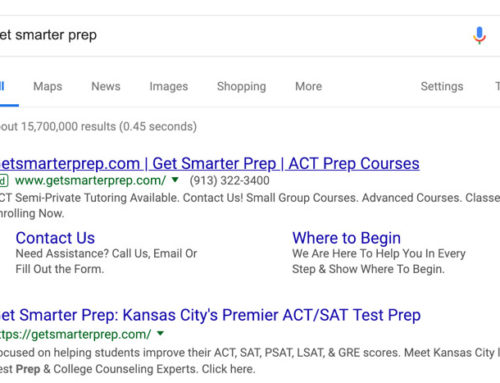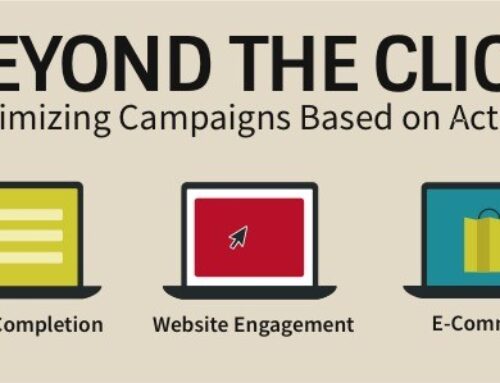Remember the old saying, “Half the money I spend on advertising is wasted; the trouble is I don’t know which half.”? You’ve heard this of course. It’s a pretty common complaint among advertisers who are using television, radio, billboards, even newspaper. That’s because these are medias that don’t lend themselves to very accurate tracking methods.
Image source: tracead.net
Does it mean they don’t work? I think you would have a hard time finding evidence, or even consensus of that. The fact that these kinds of advertisements prevail year after year is probably proof enough that they work on some level.
So why can’t we track their success? I’ll answer that question in four words: WE DON’T TAKE ACTION. It’s really that simple. We don’t take action when we see (most of) these kinds of ads. Ask yourself, when was the last time a TV or radio ad motivated you to pick up the phone and call the business? Do billboards or magazine ads inspire you to get online and visit websites?
Why is this? It’s because they are interrupting us while we are doing other things. We are watching that football game or our favorite sitcom. A television commercial comes on and maybe even catches our attention. Perhaps it is for something that interests us. But our show is going to be back on in just a few minutes. We’ll look into that later. Or we’re driving to work, listening to sports talk on the radio. A commercial reminds us that we need to get our deck sealed before winter. Do we pick up our mobile phone and make the call then and there? Probably not. What about the newspaper? You can certainly stop reading that very interesting article because that display ad caught your eye. It would be easy to make a phone call or even open up your laptop and check out the business online. But who are you fooling? Reading the paper while you have your coffee, that’s your routine. If you wanted to open your laptop, you’d probably be reading the news online anyway.
So I’ll ask again. Does this mean these kinds of advertisements don’t work? Of course not. We may not stop watching The Big Bang Theory to hop in the car and go to Kohl’s when we see their commercial, but when we need a new shirt, Kohl’s is where we think to go. And maybe we don’t want to try and dial the phone while we’re driving, but we may remember the name SealMasters from that radio ad and Google it later when we get serious about sealing our deck. The newspaper ads impact us in the same way. As you peruse the auto section of the paper, you can’t help but remember Superior Toyota branding their business and touting their special offers. So when the time comes to take test drives, they are the dealer you remember and visit.
So can we agree that these ads work? And can we also agree that the sales that these ads drive are hard to track? An increase in phone calls, web traffic, in store traffic and actual sales are really the best indicators that an advertising strategy is working.
Okay, I hear you complaining, “David, isn’t this blog supposed to be about digital marketing?” Fair enough. Let’s talk about display ads online.
The typical internet user sees 1707 display ads each month. (ComScore) Very few of these are clicked on, often ranging less than 1 click per 1000 ads. (DoubleClick) Why? Consider what we’ve just been talking about. These ads interrupt us. We aren’t looking for an ad for Fossil watches while we’re checking on our fantasy football team. We may even need a watch, and like Fossil, but we’re busy deciding if we should trade our quarterback, not shopping for a new watch. Or how about when we’re using that recipe on FoodNetwork.com to make dinner and we see the ad for Disney Parks. No, we haven’t made our vacation plans yet, and yes, we love roller coasters and princesses. But we’re right in the middle of making pizza casserole. Disney will have to wait.
Does that mean you won’t buy a Fossil watch later? (or maybe hint to your wife that you really like that one with the blue face?) Does it mean you won’t be more inclined to consider a Disney vacation over that idea of visiting our nation’s capital? Who knows?
Just like TV, radio and billboards, most people are unlikely to stop what they’re doing to take immediate action (click) on an ad. In fact, the chance that clicking on the ad will take you away from the page you’re on may be enough of a reason for you to open a new tab and go straight to the site without clicking. (When an ad influences a user to visit a site, but they don’t click on the ad, it is known as view-through.)
While I may not have any concrete data to prove my ideas, hopefully you’ll agree that my logic is at least pretty solid. And if you’re still convinced that tracking the click is a fair measurement for display, you may want to read How Google Set Standards That Other Online Advertising Channels Can’t Live Up To.
So if you can’t judge the success of a display ad campaign, how do you judge its success? The same way you judge other creative media. An increase in phone calls, web traffic, in store traffic and actual sales are really the best indicators that an advertising strategy is working.
Thanks for reading
David McBee






this is a great post. I work in digital display advertising and manage advertising campaigns.
People ask me ‘oh how many clicks has this campaign had’ and i tell them that it has been seen xxx,xxx times by xx,xxx different people to a targeted audience.
I will mention clicks, but its more as an after-taste of the main value, which is DISPLAY advertising.
Clicks are an added bonus and if you know how to use them correctly and you track them using the Google friendly URLs, to monitor how people behave on the site (landing page) after clicking on the ad and use re-marketing to reach those potential customers again and again teaching them more about your business in quick 2 or 3 second views of an ad.